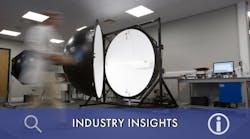During this issue production cycle, the news broke that pioneers responsible for developing the foundations and techniques for generating quantum dots will receive the 2023 Nobel Prize in Chemistry. The work of scientists Moungi G. Bawendi of the Massachusetts Institute of Technology, Louis E. Brus of Columbia University, and Alexei I. Ekimov of Nanocrystals Technology Inc. has enabled the quantum properties of the nano-sized semiconductor crystals to be leveraged in commercial applications including displays, illumination, and biomedical imaging. The Nobel Committee cited the future potential of quantum dots to drive wider commercialization of flexible electronics, miniaturized sensors, thinner solar cells, and encrypted quantum communication systems. There is ample material on the discovery and further refinement of quantum-dot mechanisms from the Royal Swedish Academy of Sciences, including a “popular science” brief, so I won’t summarize it all here.
Recognition of innovation reminds us that there are plenty more discoveries to be made in the realms of science and applied technology. Even when economic forces destabilize and global climate conditions are churning, the insatiable human curiosity prevails. Questions are answered and inevitably lead to new questions. Ultimately, business approaches are formed to capitalize on breakthroughs. And it is my hope that the human condition and our stewardship of the planet improve as a result.
You’ll find a clear focus on lighting-related research in this month’s pages. From a less formalized study on the impact of circadian lighting settings in a hospital neonatal unit to experiments designed to establish optimal lighting methods for quality videography, product developers, engineers, and professional end users can utilize such findings to further hone their own initiatives.
Furthermore, a seasoned lighting systems engineer defines the state of germicidal ultraviolet solutions, their potential to help achieve new indoor air-quality targets, and efforts underway to determine their effect on decarbonization agendas.
Also in this issue, building technologies specialists investigate the presumed energy and cost savings associated with equipping outdoor luminaires with 0–10V controls. Variation in dimming response from evaluated commercial streetlights revealed that energy savings across different control strategies was lower than anticipated due to lack of consistent power draw from uncalibrated streetlighting products. You’ll find their results and recommendations in our “Industry Insights”.
Finally, from a market development angle, associate editor Hayden Beeson reported on the DesignLights Consortium’s trending study into the differences in energy efficiency when networked lighting controls (NLC) were employed with LED lighting alone and integrated with other building loads, including HVAC systems. DLC’s savings modeling exercise will serve to direct proposals for energy incentive programs based on building size and usage and benefit/cost ratios of upgrading to NLC.
Throughout the year, we have covered challenging markets, supply-chain obstacles, and gaps or divergence in standardized approaches that can slow the pace of emerging LED-enabled technologies like integrated Li-Fi communications electronics. I appreciate the chance to hit the reset button to a more optimistic place by considering and sharing practical insights that can compel innovation into new directions.
*Expanded from the condensed column in the October 2023 issue of LEDs Magazine.
CARRIE MEADOWS is editor-in-chief of LEDs Magazine, with 20-plus years’ experience in business-to-business publishing across technology markets including solid-state technology manufacturing, fiberoptic communications, machine vision, lasers and photonics, and LEDs and lighting.
Follow our LinkedIn page for our latest news updates, contributed articles, and commentary, and our Facebook page for events announcements and more. You can also find us on the X platform.





